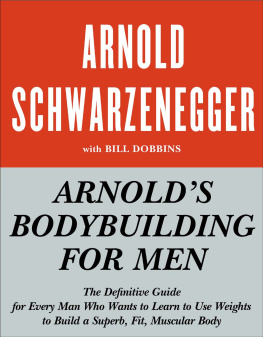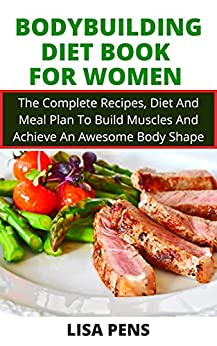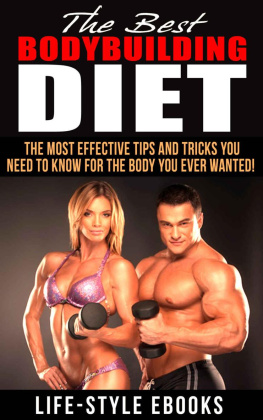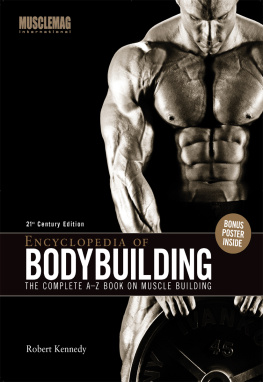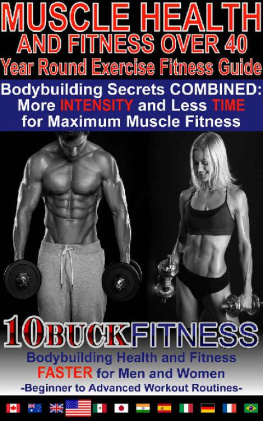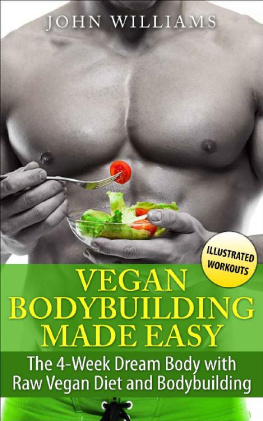Contents
Chapter 1: Trainin g
Chapter 2: Diet
Chapter 3: Rest & recovery
Chapter 4: Training plan
Chapter 1:
Training
Deciding which training program that is right for you is all about trial and error. What may suit one individual may be completely inappropriate for another due to age, weight, genetics and other key factors. The truth is when it comes to bodybuilding there is not a one size fits all approach to training. The important thing to remember though is that not everyone wants to be a bodybuilder; however, we can all apply the same principles. Certain generalisations can apply to all: hard work and consistency will always pay off. To someone that is completely new to training and has little to no previous experience of weightlifting (less than one year) pretty much anything they lift in the gym will expose their body to a new stimulus and thus stimulate muscle growth and fat loss simultaneously (assuming a good diet and good amount of rest is applied). This is due to rapid satellite cell recruitment in the muscle fibres (the cells that tell the muscles to grow due to the stimulus adaptation response) and is often referred to as newbie gains. A more experienced lifter (generally someone who has been lifting more than a year) will need to tweak certain training factors in their training program to continue growing and progressing with results in the gym.


Genetics
Genetics is a lot more important than people realise when it comes to bodybuilding, or for anything in life for that matter. For instance, when it comes to bodybuilding, our genetics, given to us through DNA (deoxyribonucleic acid) from our parents and ancestors, are what ultimately decide our structure, capability of building muscle, joints, where muscle bellies attach and even down to how small a persons waist is. Unfortunately, we cannot change our genetics as they are given to us before we were born and will be passed on to any offspring that we may have in the future. However, certain illicit substances and legal drugs such as cigarettes been have shown to cause de novo mutations in the genes of our DNA. Accordingly, the presence of potential germ cell mutagens in the environment, such as tobacco smoke, could be contributing to the occurrence of sporadic genetic diseases in human populations through the induction of de novo mutations.

The important thing to realise, however, is that no matter what genetics you may have with the right attitude to training and diet great results can be achieved in the gym setting, regardless of the life choices you make.
Volume
Volume is a very controversial subject in bodybuilding compared to other sports and disciplines. Different people can handle different levels of volume. What may be overtraining for one person may be just a regular workout for another. You need to take time to find what volume is necessary for you. Genetics, diet, rest and whether you are enhanced or not play a big role in this, which we will cover later on .
In terms of actual training volume, again, this will vary from person to person. As a general rule, 10 working sets per muscle group (excluding warm-up) will suffice for the average person trying to build muscle. Bodybuilders (even natural) are notorious for their higher volumes of training and some exceed 30 sets per body part. Again, this will take some time for you to find what is right for you and what you can handle. People who are red muscle fibre dominant (mesomorphs) will need less volume to grow compared to those who are white muscle dominant (ectomorphs). Ectomorphs and mesomorphs, along with endomorphs, are somatotypes and will also be covered in another topic.
Volume is measured by weightxrepsxsets meaning that, in theory, 1 set of 60kg for 1 rep would be the same volume as 3 sets of 20kg for 1 rep as a total of 60kg has been lifted. In an ideal scenario this would create the same muscle damage; however, common sense would tell us that this is not the case. The idea is to do as much total volume as necessary but as little as required in order to create enough muscle damage but not so much that the body cannot recover from.

Typically speaking there are two approaches to training: high volume with low-medium intensity and low volume with high intensity. Both approaches can work well in bodybuilding, depending on your goals. Studies have shown, however, that athletes who train with higher volumes and low-mid intensities achieve greater muscular hypertrophy (muscle growth) compared to those who trained with less volume and higher intensities. Bear in mind, however, that these studies were conducted on natural bodybuilders (as opposed to enhanced subjects).
It is a well-known statement that you can train long or you can train hard but you cant do both so choose wisely in your bodybuilding endeavours.
Overtraining
Overtraining is a hot topic in bodybuilding. It is largely debated all over the internet and from person to person in all gyms. The fact is, scientifically speaking, it is impossible to over-train a muscle (your body will physically give up before this occurs). What gets over-trained is your nervous system, which is the system in your body that is responsible for mood, appetite, melatonin production (sleep hormone) as well as many other functions but in a gym setting it is what controls your strength levels and overall muscular coordination and focus .
Symptoms of over-training include but are not limited to: perpetual tiredness, lack of motivation, trouble sleeping, loss of appetite, loss of strength, perpetually sore joints, injury and in some cases blurred vision. If you notice any of these symptoms then it always a good idea to re-evaluate your training program, diet or rest. It is not just your training program that can cause over-training to occur though; it can also be under-eating and/or under-recovering. Remember muscles are made in the kitchen and the bedroom. All you are doing in the gym is producing the stimulus necessary so that your diet and training help your body recover, adapt and grow from this. You do not need to completely annihilate your body on a daily basis for it to go grow.
Injury prevention
Injury prevention is key to any training program. Without injuries you can continue to progress and maintain your physique with little to no issues. Injury can vary from minor pulled muscles to extreme muscle tears and traumas. In some extreme cases an athlete can become permanently damaged from an injury and never be the same again. This is especially true of powerlifters and strongmen alike due to the extremely heavy weights being used in the gym and the overall demands on their body.
It is impossible to completely eradicate the chance of injury no matter how safely you train and how light a weight you use but you can take steps to reduce the risk: spend 5-10 minutes with stretches (static, dynamic and ballistic) beforehand for the main muscle groups that will be used for the workout. For instance, if bench pressing stretch the chest, triceps and shoulder muscles. Also be sure to incorporate 1-3 warm-up sets using 40-50% of your one-rep max on your first exercise before moving to the heavier range (80-100%). Mimicking a movement beforehand in this fashion will warm up the muscles more effectively and improve muscular coordination for the rest of the workout. This is why you will sometimes find that with one particular weight you will be able to lift it 6 times then in another set on the same day you may lift it 7-8 times due to neural coordination and efficiency. Remember safety first!




